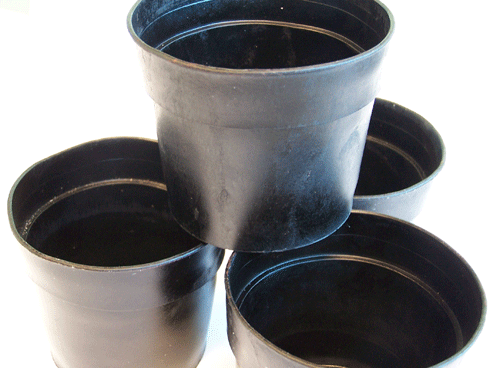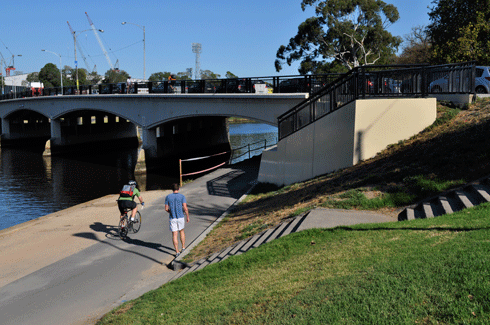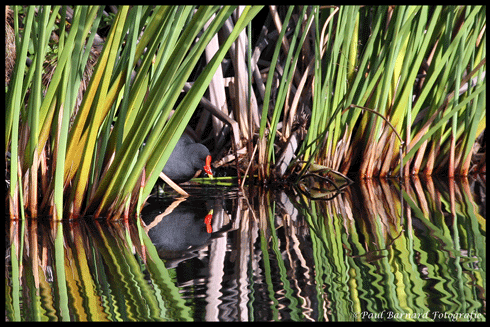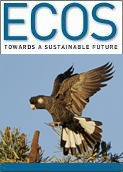
|
Published: 12 June 2013
Synchrotron makes light work of waste
Imagine light one million times brighter than the Sun that can be precisely focused onto objects at the molecular level. What could you see with such a light? And, could you use it to help put industrial by-products to good use?

|
|
The synchrotron’s capacity to focus intense light onto particle-level problems is being used for a range of innovations in sustainability. Credit:
nadia/istock
|
This light source can be found at the Australian Synchrotron. Whizzing around circular tunnels inside the synchrotron are electrons travelling so close to the speed of light that time slows down for them: as predicted by the theory of relativity. As they circle inside the tunnels, the electrons emit intense beams of light, from infrared to X-ray wavelengths, which are diverted down ‘beamlines’ extending off the main ring.
While synchrotron light is used to study a huge range of objects, from human cells to Renaissance artwork, some researchers are focusing the light on industrial by-products – and coming up with smart ways to reuse them.
One of the synchrotron’s early sustainability success stories is E-CreteTM , an environmentally responsible geopolymer cement made using fly ash and slag – waste products formed from coal combustion and steel-making, respectively.
Created by Melbourne company Zeobond and first poured in 2007, E-Crete’s impressive credentials include reducing greenhouse gas emissions by 80 per cent compared with normal concrete.
Head of Zeobond, Jannie van Deventer, says two main beamlines were used at the synchrotron to develop E-Crete: one for infrared (IR) microspectroscopy and the other for X-ray diffraction (XRD) studies.
‘Using these beamlines was important for us to get a better understanding of the concrete’s microstructure and chemistry, which helped us understand more about the durability of these new materials,’ says Prof. Van Deventer.
Six years on, the product now enjoys formal recognition from Victorian roads authority, VicRoads, which has partnered with Zeobond to use E-Crete since 2009 in projects ranging from footpaths and kerbs to precast panels and retaining walls for bridges.
More recently, the synchrotron has been playing a part in reducing waste from the livestock industry.
Across the Tasman, University of Waikato researchers are turning dried bloodmeal – produced by the local red meat processing industry – into readily biodegradable plastic that breaks down without any harmful bio-products, such as methane.
Johan Verbeek, from the university’s School of Engineering, says the researchers’ company, Aduro Biopolymers LP, first developed the plastic in 2007. They turned to synchrotron science to help them understand how their process worked.

|
|
New Zealand researchers have been able to transform meat processing waste into biodegradable plastic. Credit:
Aduro Biopolymers
|
‘We used the IR beamline to understand how the protein chains fold into different three-dimensional structures before and after the processing step, and how that changes with temperature,’ explains Dr Verbeek.
‘This helped us understand what to do during our plastic processing, to give us the final properties that we want, and improve the product.’
The team plans to revisit the Synchrotron this July to analyse their latest process, which removes the reddish colour to make a colourless plastic that can then be turned into any desired colour. They’ll use the IR beamline to investigate the structure of the polymer and find out if it changes when the haem protein, which produces the blood colour, is processed.
The technology, currently being commercialised in New Zealand, has so far been used to make degradable agricultural products such as spikes to keep weed mats in place, and plant pots, but there is scope for much more. ‘We can use our plastic to make any disposable, compostable product,’ says Dr Verbeek.
In May, Aduro Biopolymers announced it would partner with Meat and Livestock Australia to develop and commercialise a product for the Australian market.
Another livestock industry set to benefit from synchrotron science is the sheepskin trade. Sheepskin leather is generally seen as offering little value to shoemakers, as it has only half the strength of cow leather. With a total of about 40 million sheep and lambs killed each year in Australia and NZ, mainly for meat consumption, that’s a lot of lost value.
Researcher Richard Haverkamp, from New Zealand’s Massey University, was initially approached by the Leather and Shoe Research Association of New Zealand. The industry realised that if sheep leather were twice as strong, it could be used in shoes, adding about $150 million a year to the industry’s revenue.
Using a technique called small angle x-ray scattering (SAXS), Prof. Haverkamp studies how the chemical changes they make to the sheep leather affect its structure.
‘We’ve found that one of the major differences between strong and weak leather is the way the basic structural units, the collagen fibrils, are organised,’ he says. ‘In strong leather the fibrils are arranged in almost parallel planes like layers, whereas in weak leather, they are in more of a network structure.’
‘Each chemical treatment makes changes to the basic structure of the collagen. We can double the leather’s strength through changes to the processing of the skins.’
According to Prof. Haverkamp, the sheep leather work at the synchrotron is the tip of a very large iceberg. ‘It turns out the knowledge we are building also has medical and cosmetic applications,’ he says. ‘I even have one PhD student doing related work on material for heart valves.
‘Every time we discover one thing, it leads to more than one new idea, so the work is expanding rapidly from the initial sheep leather idea.’





